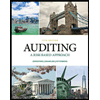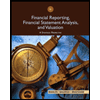
Which principle or concept states that businesses should use the same accounting methods and procedures from period to period?
a. Disclosure
b. Conservatism
c. Consistency
d. Materiality
Accounting concepts and principles: Financial statements are prepared in accordance with the guidelines of “GAAP” (Generally Accepted Accounting principles). The main objective of GAAP is to protect the interest of the investors and ensure fair business practice.
To Find: The principle or concept states that businesses should use the same accounting methods and procedures from period to period.
Answer to Problem 1QC
Explanation of Solution
Explanation for correct answer:
Consistency principle states that the same accounting principle should be followed over a period of years. The accounting methods for valuation of assets, liabilities, and inventories should not be changed from period to period. There should be a consistency in the accounting method followed.
Explanation for incorrect answers:
- Option (a) is incorrect because disclosure principle ensures, all financial information relating to the company are recorded; hence all financial information is reported.
- Option (b) is incorrect because conservatism principle states that all uncertain financial expenses and losses but not uncertain future gains should be recorded to safeguard itself from any future financial difficulties. According to this convention, the anticipated losses in future are the losses for the company, but the anticipated gains are not considered profit for the company.
- Option (d) is incorrect because materiality constraint focuses, on recording financial transactions which have a significant impact on the financial statement; hence it requires that the accounting standards must be followed for all items of significant size.
Want to see more full solutions like this?
Chapter 6 Solutions
Horngren's Financial & Managerial Accounting, The Managerial Chapters Plus MyLab Accounting with Pearson eText - Access Card Package (6th Edition)
- Cariman Company is a manufacturer with two production departments (Machining and Assembly) as well as two support departments (Human Resources and Information Services).For the last quarter of 2020, Cariman’s cost records indicate the following:SUPPORT PRODUCTIONHuman Resources (HR)Information Services(IS)MachiningAssemblyTotalBudgeted overhead costs before any inter-department cost allocations$400,000$2,000,000$10,912,000$14,916,000$28,228,000Support work supplied by HR (Number of employees)025%40%35%100%Support work supplied by IS (Processing costs)10%030%60%100%Required:1. Allocate the two support departments’ costs to the two operating departments using the following methods:a. Direct method b. Step-down method (allocate HR first) c. Step-down method (allocate IS first) d. The Algebraic method.2. Compare and explain differences in the support-department costs allocated to each production department. 3. What approaches might be used to decide the sequence in which to allocate…arrow_forwardQuick answer of this accounting questionsarrow_forwardGet correct answer this financial accounting question without use Aiarrow_forward
 Intermediate Accounting: Reporting And AnalysisAccountingISBN:9781337788281Author:James M. Wahlen, Jefferson P. Jones, Donald PagachPublisher:Cengage LearningPrinciples of Accounting Volume 1AccountingISBN:9781947172685Author:OpenStaxPublisher:OpenStax College
Intermediate Accounting: Reporting And AnalysisAccountingISBN:9781337788281Author:James M. Wahlen, Jefferson P. Jones, Donald PagachPublisher:Cengage LearningPrinciples of Accounting Volume 1AccountingISBN:9781947172685Author:OpenStaxPublisher:OpenStax College- Principles of Accounting Volume 2AccountingISBN:9781947172609Author:OpenStaxPublisher:OpenStax College
 Auditing: A Risk Based-Approach (MindTap Course L...AccountingISBN:9781337619455Author:Karla M Johnstone, Audrey A. Gramling, Larry E. RittenbergPublisher:Cengage Learning
Auditing: A Risk Based-Approach (MindTap Course L...AccountingISBN:9781337619455Author:Karla M Johnstone, Audrey A. Gramling, Larry E. RittenbergPublisher:Cengage Learning Financial Reporting, Financial Statement Analysis...FinanceISBN:9781285190907Author:James M. Wahlen, Stephen P. Baginski, Mark BradshawPublisher:Cengage Learning
Financial Reporting, Financial Statement Analysis...FinanceISBN:9781285190907Author:James M. Wahlen, Stephen P. Baginski, Mark BradshawPublisher:Cengage Learning





